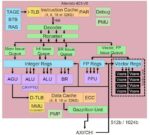Many modern processor performance benchmarks rely on as many as three levels of cache staying continuously fed. Yet, new data-intensive applications like multithreaded generative AI and 4K image processing often break conventional caching, leaving the expensive execution units behind them stalled. A while back, Semidynamics… Read More
RISC-V 64 bit IP for High Performance
RISC-V as an Instruction Set Architecture (ISA) has grown quickly in commercial importance and relevance since its release to the open community in 2015, attracting many IP vendors that now provide a variety of RTL cores. Roger Espasa, CEO and Founder of Semidynamics, has presented at RISC-V events on how their IP is customized… Read More
Configurable RISC-V core sidesteps cache misses with 128 fetches
Modern CPU performance hinges on keeping a processor’s pipeline fed so it executes operations on every tick of the clock, typically using abundant multi-level caching. However, a crop of cache-busting applications is looming, like AI and high-performance computing (HPC) applications running on big data sets. Semidynamics… Read More




